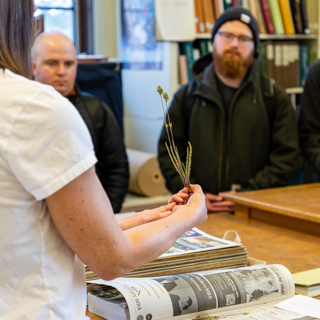Vascular Plant Collections
MONTU's vascular plant collections span a substantial taxonomic and geographic range. About 60% of the 130,000 vascular plant specimens are from Montana. The state encompasses a diversity of plant communities, including Great Plains prairies, Great Basin sagebrush steppes, boreal forests, Northern Rockies alpine communities, and the eastern limit of the moist conifer forests of the Pacific Northwest. Many species typical of these communities reach their range limits in Montana, making Montana specimens and associated data, of particular ecological and taxonomic interest to researchers around the world. The mountainous western part of the state, which is especially well-represented in the MONTU collections, has a variety of unique habitats. The non-Montana vascular plant collections include many duplicate specimens from Wyoming, Idaho, Utah and Nevada housed through exchanges with institutions in those states, as well as representatives of widespread genera with Montana taxa.
Over 100 years of botanical research in Montana is represented in the MONTU vascular plant collections. There are hundreds of specimens from important early collectors, including C. Bessey, F. D. Kelsey, Marcus Jones and W. N. Suksdorf. The UM Herbarium has a rich history, but its greatest strength lies in more recent collections: over 20,000 (28%) of the Montana vascular plant specimens were collected in the past 40 years by Prof. Klaus Lackschewitz or Peter Lesica. These newer specimens have location data accurate to the nearest square mile, which makes them a particularly useful resource for ecological and biogeographical studies.
Search the vascular plant collection by visiting the Consortium of Pacific Northwest Herbaria. Select Specimen Data, then choose Vascular Plants for Taxonomy, and the University of Montana Herbarium (MONTU) as the Herbaria to Search. Label information is available for MONTU's entire Montana vascular collection. Many records include high-resolution images.

